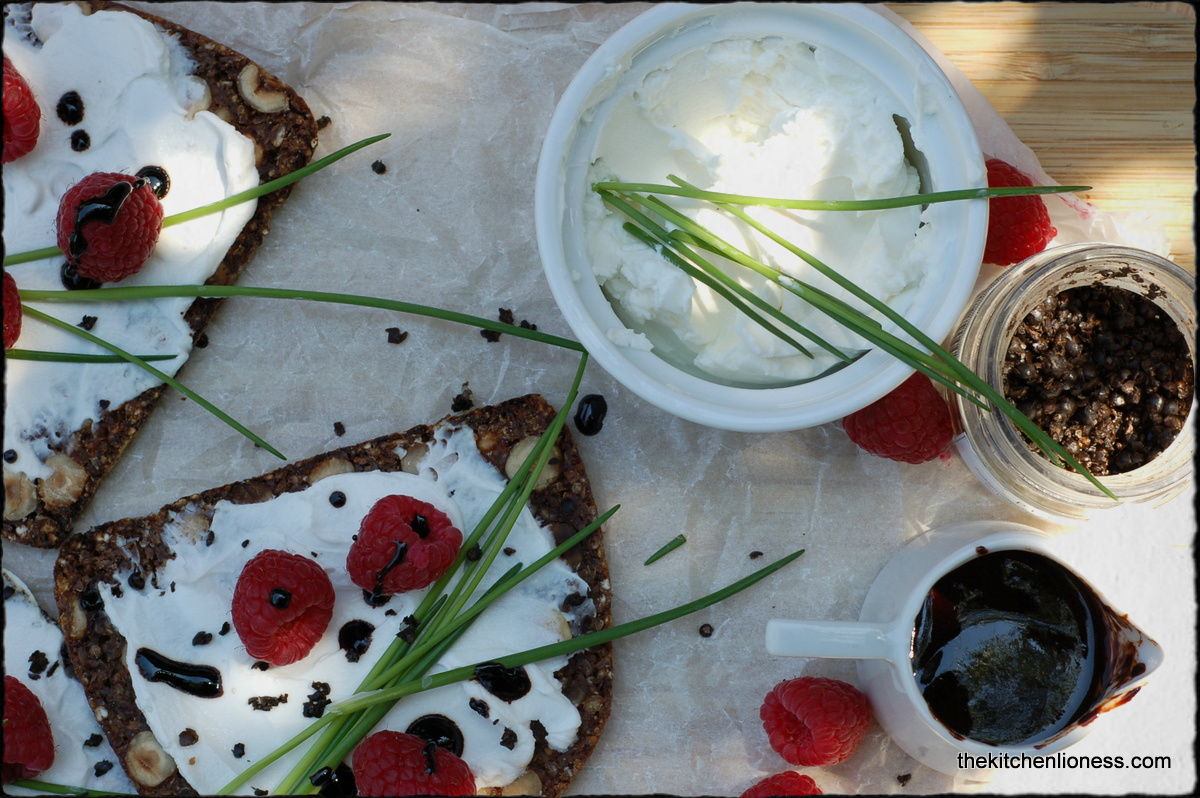Today´s recipe for the French Fridays with Dorie group is Socca, a chickpea flour pancake that is a specialty of Nice. It is also known as Farinata in Liguria, Italy. It is essentially a large pancake made from but a few ingredients such as chickpea flour, water, olive oil, a bit of salt and a healthy dose of freshly ground black pepper and sometimes, as is the case with a lot of Italian recipes and Dorie´s recipe, chopped rosemary.
|
Die French Fridays with Dorie-Gruppe bereitet heute Socca zu, eine Pfannkuchen Spezialität mit Kichererbsenmehl aus Nizza. In Ligurien kennt man Socca auch als Farinata. Socca ist ein Pfannkuchen mit nur einigen wenigen Zutaten wie Kichererbsenmehl, Wasser, Olivenöl, ein wenig Salz und etwas frisch gemahlenen Pfeffer und etwas frischem Rosmarin - eine Zutat sowohl in Dorie´s als auch in vielen italienischen Rezepten.. |
The batter for the Socca is as quick and easy to put together as a pancake. The batter for the Socca should rest for about two hours or even overnight and it is baked in the oven, finished in a broiler and done in about 20 minutes. It can be served hot or warm, with toppings such as caramelized onions and oven roasted tomatoes or just a light drizzle of olive oil and some more freshly ground black pepper.
Around here chickpea flour is sold in Middle Eastern and natural foods markets. So I bought two bags of chickpea flour and made two different large Soccas. The first one I made with the roasted chickpea flour from my favorite natural food store. When I prepared the batter, it thickened so quickly that I had to add more water to get the consistency right. The baked Socca had a real rustic appeal and a nice nutty taste. |
Der Teig für den Socca ist einfach und genauso schnell gemacht wie jeder Pfannekuchenteig. Der Teig für den Socca sollte wenigstens zwei Stunden bei Zimmertemperatur stehen – er kann allerdings auch über Nacht ruhen. Der Socca wird erst im Ofen gebacken und dann für einige Minuten mit Oberhitze gebräunt und anschließend heiß oder warm serviert. Vor dem Servieren kann man den Socca mit ein wenig gutem Olivenöl beträufeln und mit frisch gemahlenem schwarzen Pfeffer verfeinern. Man kann ihn mit karamelisierten Zwiebeln oder im Ofen gerösteten Tomaten servieren. Kichererbsenmehl findet man in asiatischen Läden oder in Bio-Geschäften. Ich habe geröstetes Kichererbsenmehl im Bio Laden besorgt. Mit diesem Mehl brauchte ich mehr als eine Tasse Wasser, um die richtige Konsistenz für den Socca zu bekommen. Der gebackenen Socca sieht sehr schön rustikal aus und schmeckt wunderbar nussig. |
The second Socca contained the regular chickpea flour from a Middle Eastern market, the batter was considerably less thick than the first, the color was lighter, it baked more like a pancake and tasted less nutty than the first.
|
Einen zweiten Socca habe ich mit dem Kichererbsenmehl aus dem Asiatischen Laden zubereitet. Der Teig war wesentlich heller und deutlich flüssiger und der fertige Socca hatte eher die Konsistenz eines Pfannekuchens und war weniger nussig als der erste Socca. |
Preparing the Soccas was new to me and it was fun to learn a few things about chickpea flour and what it is used for, particularly since I had never used this type of flour before.
Recipe for the Socca (Farinata)
Ingredients
Preparation
To see more Soccas from the French Fridays with Dorie group, please click here.
|
Socca zuzubereiten war interessant – ich habe das erste Mal Kichererbsenmehl verwendet und war angenehm überrascht. Rezept für Kichererbsenmehl Pfannkuchen (Farinata) Zutaten
Zubereitung
Um die anderen Soccas der French Fridays with Dorie Gruppe anzuschauen, bitte hier klicken. |


















































